
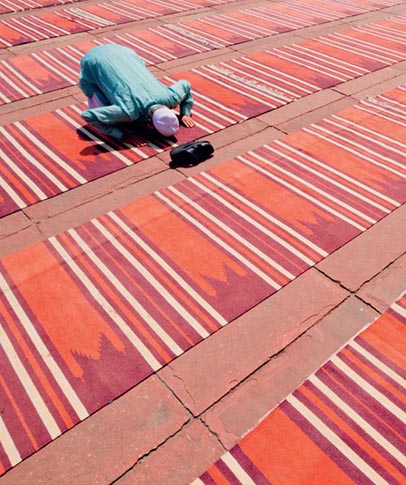 For years, Tom Mackie used a 4x5in plate camera to shoot landscapes. He tells Keith Wilson why he switched to digital, and how he combines large format principles with digital advances. Growing up in the American Midwest, Tom Mackie dreamt of being a photojournalist, but ended up working as a studio photographer. In Los Angeles, he mastered the intricacies of working with sheet film and the 4x5in format. Today, a Nikon D800 is his camera of choice, and his studio is outdoors with just the sun for lighting. There have been many lessons along the way in this remarkable transformation.
For years, Tom Mackie used a 4x5in plate camera to shoot landscapes. He tells Keith Wilson why he switched to digital, and how he combines large format principles with digital advances. Growing up in the American Midwest, Tom Mackie dreamt of being a photojournalist, but ended up working as a studio photographer. In Los Angeles, he mastered the intricacies of working with sheet film and the 4x5in format. Today, a Nikon D800 is his camera of choice, and his studio is outdoors with just the sun for lighting. There have been many lessons along the way in this remarkable transformation.
Download the entire article as a pdf.
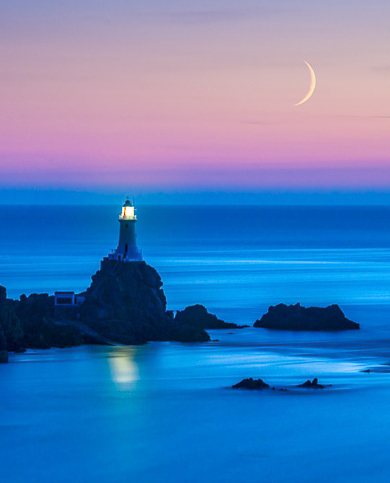
A beguiling mixture of British and Continental influences, Jersey is in a league of its own when it
comes to landscapes. Tom Mackie shows five AP readers how to make the most of its landmarks.
Download the entire article as a pdf.
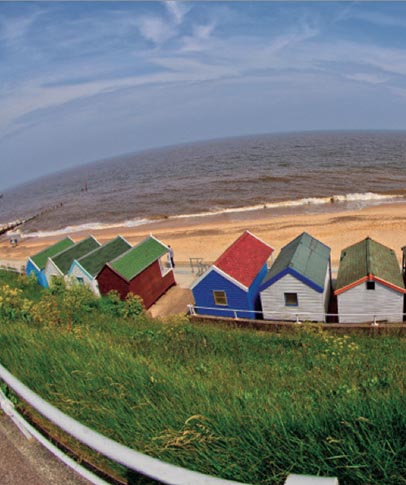 Where better to take pictures in the summer than a seaside town? Tom Mackie meets five AP readers in Southwold quay, while Gill Mullins puts down her candyfloss to take notes
Where better to take pictures in the summer than a seaside town? Tom Mackie meets five AP readers in Southwold quay, while Gill Mullins puts down her candyfloss to take notes
Download the entire article as a pdf.
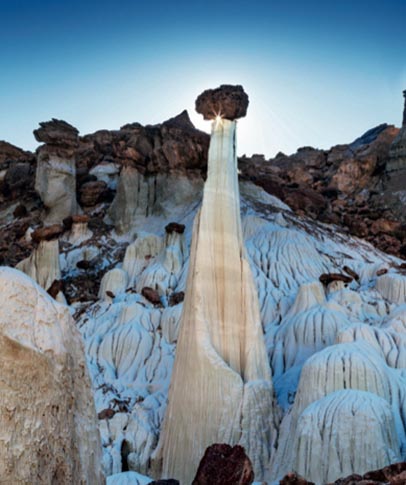 Ahh... the days of Velvia, when life was simple and you knew A where you stood with film. Yes, I hear many of you newbies to the photography world ask, ‘what is Velvia?’ Even more astounding is, ‘what is a transparency or an enlarger?’ It even seems strange referring to it in the past tense. My, how time flies and technology evolves.
Ahh... the days of Velvia, when life was simple and you knew A where you stood with film. Yes, I hear many of you newbies to the photography world ask, ‘what is Velvia?’ Even more astounding is, ‘what is a transparency or an enlarger?’ It even seems strange referring to it in the past tense. My, how time flies and technology evolves.
Download the entire article as a pdf.
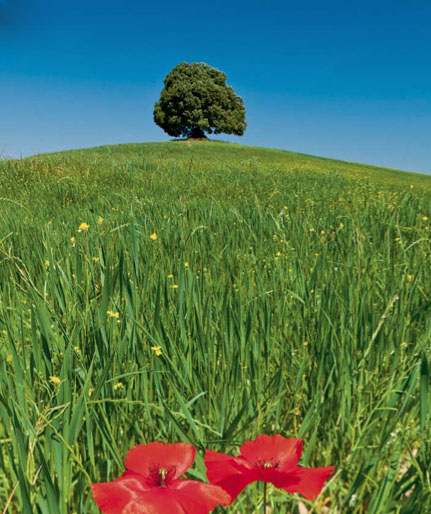 The poppy season is upon us once again when splashes of red wash landscapes as if from the brush strokes of Monet. Here Tom Mackie gives you three different techniques to help capture your own masterpiece. When I go in search of a poppy field there are key aspects that I look for in order to create a good composition. Mainly, a thick concentration of poppies with no bare patches and minimal weeds that will break up the colour.
The poppy season is upon us once again when splashes of red wash landscapes as if from the brush strokes of Monet. Here Tom Mackie gives you three different techniques to help capture your own masterpiece. When I go in search of a poppy field there are key aspects that I look for in order to create a good composition. Mainly, a thick concentration of poppies with no bare patches and minimal weeds that will break up the colour.
Download the entire article as a pdf.
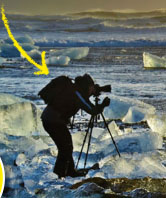 Follow our easy camera techniques for breathtaking winter landscape shots – with a little help from the UK’s best professional landscape photographers! Many people just think of winter as a freezing cold season best spent indoors. But for us outdoor photographers, if you dress right for the challenging weather conditions, it offers amazing photographic opportunities to bag some winning scenic shots. Icy conditions, snowbound landscapes and frost all help to transform standard issue scenes into atmospheric winter wonderlands.
Follow our easy camera techniques for breathtaking winter landscape shots – with a little help from the UK’s best professional landscape photographers! Many people just think of winter as a freezing cold season best spent indoors. But for us outdoor photographers, if you dress right for the challenging weather conditions, it offers amazing photographic opportunities to bag some winning scenic shots. Icy conditions, snowbound landscapes and frost all help to transform standard issue scenes into atmospheric winter wonderlands.
Download the entire article as a pdf.
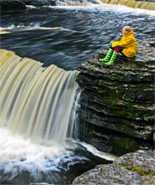 When photographing the landscape, it can be tricky fitting everything into the frame. Even using your widest focal length there are situations in which it is impossible to capture the scale of a place in a single shot. As frustrating as this can be, there is a solution: to shoot a sequence of frames and stitch them together in Photoshop to create a panoramic image. In this month’s Masterclass, Tom Mackie and three AP readers trek to the Yorkshire Dales to try their hand at shooting and stitching panoramic images.
When photographing the landscape, it can be tricky fitting everything into the frame. Even using your widest focal length there are situations in which it is impossible to capture the scale of a place in a single shot. As frustrating as this can be, there is a solution: to shoot a sequence of frames and stitch them together in Photoshop to create a panoramic image. In this month’s Masterclass, Tom Mackie and three AP readers trek to the Yorkshire Dales to try their hand at shooting and stitching panoramic images.
Download the entire article as a pdf.
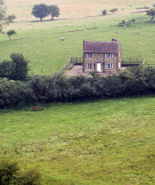 Most towns and villages have a legend or two, and Hole of Horcum in North Yorkshire is no different. According to folklore, a giant called Wade scooped up a huge clod of earth resulting in a hollow that is 400ft (120m) deep and wide. The reasons for Wade’s actions seem to differ depending on who you ask, but however the hollow was formed it has created a landscape photographer’s dream. In the right conditions, the area offers spellbinding banks of mist blanketing the area and the morning sun throws shafts of light onto the land. In winter, snow transforms the area into a stunning white vista offering the kinds of moments every photographer prays for.
Most towns and villages have a legend or two, and Hole of Horcum in North Yorkshire is no different. According to folklore, a giant called Wade scooped up a huge clod of earth resulting in a hollow that is 400ft (120m) deep and wide. The reasons for Wade’s actions seem to differ depending on who you ask, but however the hollow was formed it has created a landscape photographer’s dream. In the right conditions, the area offers spellbinding banks of mist blanketing the area and the morning sun throws shafts of light onto the land. In winter, snow transforms the area into a stunning white vista offering the kinds of moments every photographer prays for.
Download the entire article as a pdf.
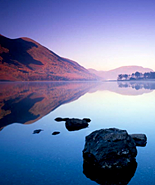 With the culturally rich town of Keswick at its centre, the northern section of the Lake District includes the dramatic peaks of Blencathra and Skiddaw, popular fells including High Pike and Cat Bells, and, of course, stunning lakes, including Bassenthwaite, Derwentwater and Ullswater. The northern area is my personal favourite as it is less touristy, tends to have better weather than the south, and contains, in my own opinion, more outstanding photographic locations.
With the culturally rich town of Keswick at its centre, the northern section of the Lake District includes the dramatic peaks of Blencathra and Skiddaw, popular fells including High Pike and Cat Bells, and, of course, stunning lakes, including Bassenthwaite, Derwentwater and Ullswater. The northern area is my personal favourite as it is less touristy, tends to have better weather than the south, and contains, in my own opinion, more outstanding photographic locations.
Download the entire article as a pdf.
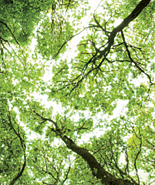 Landscape photographer Tom Mackie whisks five readers off to Hertfordshire’s Ashridge Forest and explains how to capture creative woodland images. Oliver Atwell joins them.
Landscape photographer Tom Mackie whisks five readers off to Hertfordshire’s Ashridge Forest and explains how to capture creative woodland images. Oliver Atwell joins them.
THERE’S no better time to photograph woodlands than in the spring and summer. The leaf shoots are a vibrant green and the floors are covered in abundant foliage and wildflowers. One such woodland is Ashridge Forest in Hertfordshire, and that’s where photographer Tom Mackie took four AP readers who were eager to capture the lush seasonal colours.
Download the entire article as a pdf.
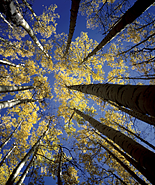 Photography is about seeing. But it’s also about what you don’t see. For celebrated landscape
Photography is about seeing. But it’s also about what you don’t see. For celebrated landscape
photographer Tom Mackie, this is one of the most important points to remember when shooting scenes.
The first thing Tom does once he’s ready to take a picture is scour the scene, looking for any patterns or geometric shapes he can make a feature of in his composition. “I really don’t like cluttered landscapes, and composing for patterns is a good way of giving a sense of order to the natural world. This helps the viewer’s eye navigate more easily through the frame.” For Tom, composition is a process of dissecting all the detail out of the landscape.
Download the entire article as a pdf.
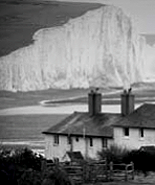 This month, Tom Mackie and three readers are in Seaford, East Sussex, in search of idyllic b&w landscapes. It was rainy and windy, but Tom explains how to create memorable images whatever the weather. Gemma Padley reports
This month, Tom Mackie and three readers are in Seaford, East Sussex, in search of idyllic b&w landscapes. It was rainy and windy, but Tom explains how to create memorable images whatever the weather. Gemma Padley reports
There are times when you pray that the weather forecasters have got it wrong. Unfortunately, most of the time the Met Office gets it right, and if rain is forecast you can pretty much guarantee that there will be a torrential downpour or, at best, light showers and flat skies. However, as any landscape photographer knows, you have two choices: you can either give up before you’ve even started or muster some courage and brave the elements.
Download the entire article as a pdf.
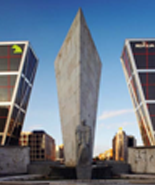 Some buildings are so striking you can’t help but photograph them. The KIO Towers, also known as the Puerta de Europa towers or Gate of Europe, stand more than 100 metres high. Commissioned by the Kuwait Investment Office in the mid-1990s, they tilt at a 15° angle and are an imposing sight on the Madrid skyline. With the statue in the foreground standing immediately in front of the monolith-like structure and the two towers leaning in either side, this is a classic photographic location and a classic composition.
Some buildings are so striking you can’t help but photograph them. The KIO Towers, also known as the Puerta de Europa towers or Gate of Europe, stand more than 100 metres high. Commissioned by the Kuwait Investment Office in the mid-1990s, they tilt at a 15° angle and are an imposing sight on the Madrid skyline. With the statue in the foreground standing immediately in front of the monolith-like structure and the two towers leaning in either side, this is a classic photographic location and a classic composition.
I was keen to photograph the towers in daylight and at night to see what moods I could create. There was about 45 minutes between each shot. The vantage point may be the same, but the mood in each image is very different – one is bright and clear, the other is brooding and sinister. These contrasting atmospheres are entirely due to the use of light. I took these images the same day that I took the KIO Towers image that appeared in AP 19-26 December 2009.
Download the entire article as a pdf.
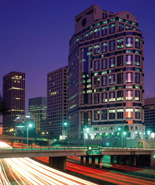 This is the Harbor Freeway in Los Angeles at twilight. The main building is an office complex designed by Kohn Pedersen Fox Associates. By shooting as the sun was setting I’ve been able to capture traces of ambient light in the sky, which contrasts nicely with the twinkling artificial lights dotted throughout the scene. At this time of the day there is a five- or ten-minute period before the light disappears, so you have to work quickly. I took this picture on a Wista 5x4 DX field camera with a 150mm lens using Fujichrome Velvia 50 film. I set up my camera on a tripod and was careful to ensure the vertical lines were straight.
This is the Harbor Freeway in Los Angeles at twilight. The main building is an office complex designed by Kohn Pedersen Fox Associates. By shooting as the sun was setting I’ve been able to capture traces of ambient light in the sky, which contrasts nicely with the twinkling artificial lights dotted throughout the scene. At this time of the day there is a five- or ten-minute period before the light disappears, so you have to work quickly. I took this picture on a Wista 5x4 DX field camera with a 150mm lens using Fujichrome Velvia 50 film. I set up my camera on a tripod and was careful to ensure the vertical lines were straight.
You sometimes see cityscapes with light trails where the sky has gone completely black and they don’t look that appealing. I prefer purple/magenta skies like this one that subtly graduate to deep blue at the top as I think it adds to the atmosphere in the image. The colours in the sky greatly depend on where the sun is setting and in this image I’m looking north – there is not as much gradation in the sky as there would have been had I been looking west where the sun sets. Yet the even tone works here as it allows the eye to differentiate between the buildings and the sky.
Download the entire article as a pdf.
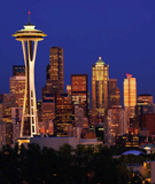 This is a particularly well-known view in Seattle, Washington, and I was keen to get a night shot of the scene. The tower is called the Space Needle. Standing at more than 600 feet (182 metres) tall, it has become a symbolic landmark not only in Seattle but also in north-west America.
This is a particularly well-known view in Seattle, Washington, and I was keen to get a night shot of the scene. The tower is called the Space Needle. Standing at more than 600 feet (182 metres) tall, it has become a symbolic landmark not only in Seattle but also in north-west America.
I took this shot from a park that overlooks the city. It’s a great location because at certain times of the year you can see Mount Rainier, or Mount Tahoma as it is also known, in the distance (see panoramic shot below).
People often ask me why I take pictures of a scene that has been photographed so many times. The answer is because it is an iconic image that people want to buy. In any iconic location, whether it’s a city or a landscape, there are always one or two classic images – and those are the photographs you have to get. You can be creative with your shots, but the classic viewpoint will always sell.
Download the entire article as a pdf.
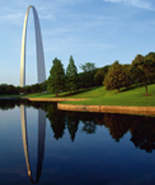 This is the famous Gateway Arch in St Louis, in the US state of Missouri. It’s a place that has a lot of meaning for me, because I grew up in nearby Iowa and we used to go to St Louis to watch the Cardinals baseball team play. I remember standing under the arch as a kid, holding a camera and taking pictures of the structure in 1966. I took this image in 2000, and returning as a professional photographer brought back many memories.
This is the famous Gateway Arch in St Louis, in the US state of Missouri. It’s a place that has a lot of meaning for me, because I grew up in nearby Iowa and we used to go to St Louis to watch the Cardinals baseball team play. I remember standing under the arch as a kid, holding a camera and taking pictures of the structure in 1966. I took this image in 2000, and returning as a professional photographer brought back many memories.
The arch is known as the ‘Gateway to the West’ because of its location in mid-west America. It’s an iconic image of the city of St Louis. As it’s so large and the structure is so unusual, you can photograph the arch from different places around the city to show its various aspects. The view people often photograph is from the river on the other side, but I wanted to find something that was a bit more unusual.
I found this picturesque park just behind the arch. There was a beautiful lake and the water was crystal clear and still, so it was perfect for reflections. I liked how there was no city skyline to clutter the horizon and swamp the arch; it towered majestically above the water, unencumbered by buildings that might jostle for attention, and its reflection was reproduced perfectly in the dark inky water.
Download the entire article as a pdf.
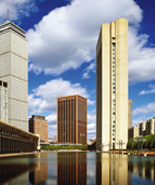 I had been on a shoot in New England in the USA and had stopped in Boston when I saw this scene. I’d been looking for skyline shots and the clear reflection in the water caught my eye. When I’m searching for architectural scenes to photograph, I tend to look for buildings that are lit in interesting ways or areas with strong foregrounds that I can include in my shot, such as sculptures, pools of water, fountains and bridges. In fact, I look for anything that leads the eye to the buildings behind or that enhances the overall composition.
I had been on a shoot in New England in the USA and had stopped in Boston when I saw this scene. I’d been looking for skyline shots and the clear reflection in the water caught my eye. When I’m searching for architectural scenes to photograph, I tend to look for buildings that are lit in interesting ways or areas with strong foregrounds that I can include in my shot, such as sculptures, pools of water, fountains and bridges. In fact, I look for anything that leads the eye to the buildings behind or that enhances the overall composition.
When you’re confronted with a scene with many different elements – vertical lines, diagonal lines, intersecting lines, rectangular blocks – you have to think carefully about what you are trying to achieve. What do you want to make the most of in the frame, and what do you have to include and exclude to achieve this? Are you shooting a skyline, a cluster of buildings or focusing on a single structure? If there is lots going on, it may be better to isolate one building rather than photograph the entire skyline.
Download the entire article as a pdf.
 Fifty years ago, you wouldn’t have wanted to linger in certain parts of Los Angeles, in the USA. filled with derelict buildings and lacking inhabitants, there was little to captivate an eagle-eyed photographer. yet over the years, LA City Council has invested in new building projects and the area has vastly improved. Downtown LA now has many impressive arts and sports facilities, so there are numerous opportunities to photograph eye- catching architecture if you know where to look. One key project was the construction of the Museum of Contemporary Art (MOCA) in 1979. Built in three parts, it is the only museum in Los Angeles devoted to contemporary art. this is MOCA Grand Avenue.
Fifty years ago, you wouldn’t have wanted to linger in certain parts of Los Angeles, in the USA. filled with derelict buildings and lacking inhabitants, there was little to captivate an eagle-eyed photographer. yet over the years, LA City Council has invested in new building projects and the area has vastly improved. Downtown LA now has many impressive arts and sports facilities, so there are numerous opportunities to photograph eye- catching architecture if you know where to look. One key project was the construction of the Museum of Contemporary Art (MOCA) in 1979. Built in three parts, it is the only museum in Los Angeles devoted to contemporary art. this is MOCA Grand Avenue.
the buildings, with their sharp- edged design and geometrical shapes, offer many photographic opportunities. On this occasion i was looking for interesting shapes that would blend in with the museum buildings. Scenes like this, where there are many shapes vying for attention, require a careful, precise approach. you have to ensure that every component sits in its right place, otherwise the composition will look cluttered and jumbled. Using my Wista 5x4in camera loaded with fujichrome Velvia 50 film, i made it my goal to create a photograph that would bring together the most striking elements of the background and foreground to create a visually strong image.
Download the entire article as a pdf.
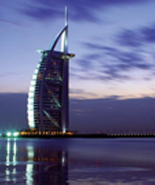 I took this image in Dubai in 2005 during a photography workshop in the United Arab Emirates. the building is the Burj Al Arab or ‘tower of the Arabs’, which is 321 metres high and built on an artificial island near Jumeirah Beach. Designed to resemble a billowing sail, the building has become a striking landmark in its own right. I wanted to get a night shot of this building using a long exposure to show the lingering clouds and the glassy reflections in the water. the moving clouds, as they streak across the sky, create a pleasing effect. I used a tripod because of my 20-30sec exposure and set up my Pentax 6x7 camera and 75mm shift lens, making sure the tripod legs were firmly fixed in the sand to stop the tripod sinking and blurring the exposure. I checked that my camera was level and adjusted the shift of the lens to make sure the verticals were straight.
I took this image in Dubai in 2005 during a photography workshop in the United Arab Emirates. the building is the Burj Al Arab or ‘tower of the Arabs’, which is 321 metres high and built on an artificial island near Jumeirah Beach. Designed to resemble a billowing sail, the building has become a striking landmark in its own right. I wanted to get a night shot of this building using a long exposure to show the lingering clouds and the glassy reflections in the water. the moving clouds, as they streak across the sky, create a pleasing effect. I used a tripod because of my 20-30sec exposure and set up my Pentax 6x7 camera and 75mm shift lens, making sure the tripod legs were firmly fixed in the sand to stop the tripod sinking and blurring the exposure. I checked that my camera was level and adjusted the shift of the lens to make sure the verticals were straight.
Download the entire article as a pdf.
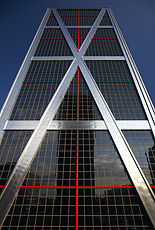 All too often, converging verticals get a bad reputation. In a bid to replicate reality, many photographers try to prevent this optical occurrence either by photographing from a high vantage point, or positioning themselves further away and using a longer focal length to reduce the amount the camera needs to be tilted.
All too often, converging verticals get a bad reputation. In a bid to replicate reality, many photographers try to prevent this optical occurrence either by photographing from a high vantage point, or positioning themselves further away and using a longer focal length to reduce the amount the camera needs to be tilted.
Sometimes, though, embracing the very thing you are trying to avoid reaps huge rewards, as I discovered when photographing Madrid's famous KIO Towers, also known as the Puerta de Europa towers or Gate of Europe. The two identical bulldings commissioned by the Kuwait Investment Office (KIO) in the mid-1990's. You can see the reflection of the other building in the glass.
Designed by American architects Philip Johnson and John Burgee, the buildings, each more than 100 metres tall and tilting at a 15° angle, are positioned at the northern end of the Castellana Avenue, either side of the Plaza Castilla in Madrid.
Download the entire article as a pdf.
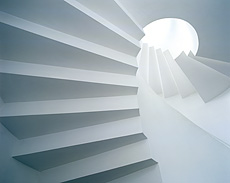 I found this scence by pure luck during a photography trip to the Amalfi Coast in Italy. It was pouring with rain one day, so I decided to have a look inside a nearby hotel in a town called Ravello. The weather was abysmal, so I wandered around the hotel to see if I could find anything interesting to photograph. I went up one of the back staircases and stumbled across this winding set of steps. It was an incredible design, and the shapes and patterns fitted together in such a fascinating way it jumped out at me.
I found this scence by pure luck during a photography trip to the Amalfi Coast in Italy. It was pouring with rain one day, so I decided to have a look inside a nearby hotel in a town called Ravello. The weather was abysmal, so I wandered around the hotel to see if I could find anything interesting to photograph. I went up one of the back staircases and stumbled across this winding set of steps. It was an incredible design, and the shapes and patterns fitted together in such a fascinating way it jumped out at me.
Scenes with lots of shapes and patterns can be tricky to compose because therer are so many contrasting elements. When I look through the viewfinder I'm constantly editing within my eye and asking myself, 'Would this look good another way?' or 'Should I edit that out?'
Download the entire article as a pdf.
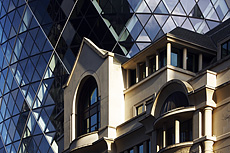 The Gherkin in London, like many landmark buildings, is difficult to photograph because it is so iconic. The familiar triangle shapes of the windows and the conical structure are so well known you can spot them a mile off. Because the Gherkin has been photographed many times and from numerous angles, it requires a bit of thought to come up with something original. I'd photographed the London skyline with the Gherkin in the distance before, but I thought it would be interesting to juxtapose a contrasting building in front of it. The building in front is much older looking, although I' not sure if it is genuinely old or has been made to look this way.
The Gherkin in London, like many landmark buildings, is difficult to photograph because it is so iconic. The familiar triangle shapes of the windows and the conical structure are so well known you can spot them a mile off. Because the Gherkin has been photographed many times and from numerous angles, it requires a bit of thought to come up with something original. I'd photographed the London skyline with the Gherkin in the distance before, but I thought it would be interesting to juxtapose a contrasting building in front of it. The building in front is much older looking, although I' not sure if it is genuinely old or has been made to look this way.
Download the entire article as a pdf.
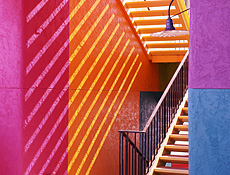 Finding this scene was a pure fluke. I had been photographing the City Hall, a Spanish-style domed building in the middle of Tucson, Arizona and out of the corner of my eye I saw a flash of colour. With my interest piqued, I thought I'd go and investigate.
Finding this scene was a pure fluke. I had been photographing the City Hall, a Spanish-style domed building in the middle of Tucson, Arizona and out of the corner of my eye I saw a flash of colour. With my interest piqued, I thought I'd go and investigate.
I stumbled across this business complex called La Placita that was built in the traditional Adobe style (made from sand and clay) and painted with these bright colours. It was incredible. I started wandering around looking for interesting details and paying particular attention to the way the light was hitting the building. I found this unassuming stairwell and started taking some pictures. What attracted me to the scene was the light streaming thought the stairs, bouncing of the wall and creating these striking diagonal lines.
Download the entire article as a pdf.
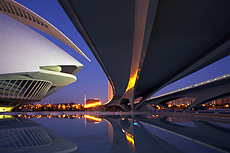 The are many interesting angles to take photographs from the City of Arts and Sciences leisure complex in Valencia, Spain. The complex, which was designed by Santiago Calatrava and Félix Candela and completed in 2005, consists of several buildings. In AP 1 August, I talked about an image I had taken of the El Palau de les Arts Reina Sofia opera house and this is the same building but photographed from underneath an adjacent bridge. From this angle I could create a dynamic sweeping shape in my image.
The are many interesting angles to take photographs from the City of Arts and Sciences leisure complex in Valencia, Spain. The complex, which was designed by Santiago Calatrava and Félix Candela and completed in 2005, consists of several buildings. In AP 1 August, I talked about an image I had taken of the El Palau de les Arts Reina Sofia opera house and this is the same building but photographed from underneath an adjacent bridge. From this angle I could create a dynamic sweeping shape in my image.
Download entire article as pdf.
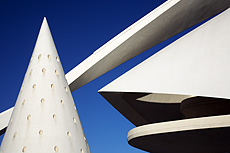
When I first saw the City of Arts and Sciences building, I thought it was an incredible design. I knew straightaway I had to photograph it. The entertainment complex is a series of buildings situated at the end of the Turia riverbed in Valencia, Spain. Designed by Santiago Calatrava and Félix Candela, construction on the site began in 1996 and the entire complex was completed in 2005. This is a section of the El Palau de les Arts Reina Sofia opera house.
Download entire article as pdf.
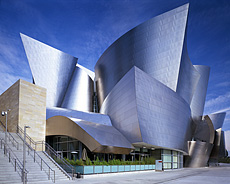
I've loved the work of Canadian-American architect Frank Gehry for many years. He designed the Guggenheim Museum in Bilbao, Spain and the Walt Disney Concert Hall in Los Angeles, USA, pictured here. I love the sweeping staircase and the way the shapes fold into each other. The Concert Hall was completed in 2003 and I photographed it about a year after completion.
Download entire article as pdf.
